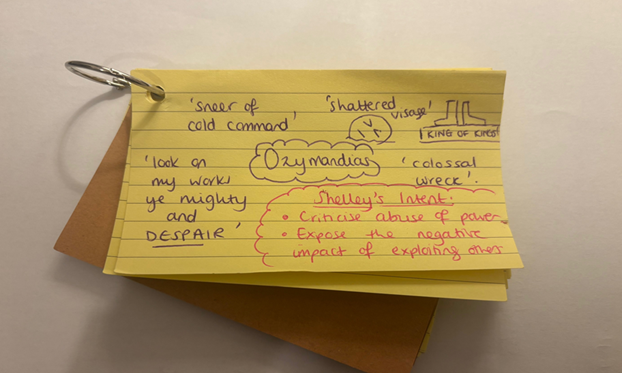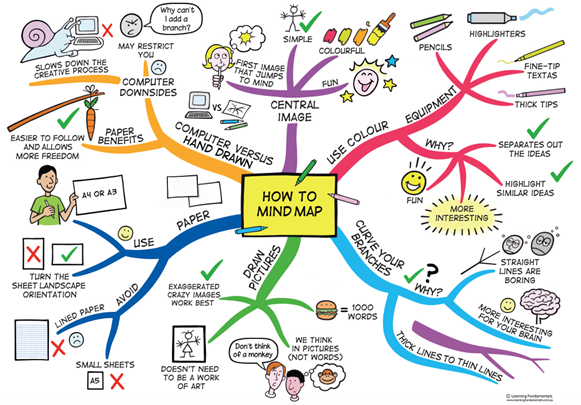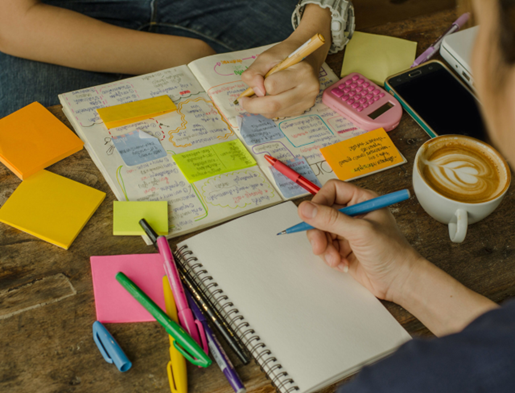How to Revise
1. Start with the end in mind
•Know what is on the exam: Use the syllabus and topic lists from your teachers and start with your weaker areas.
•Do past papers: Begin by doing a past exam, even if you don't feel ready, to immediately identify areas where you are lacking knowledge.
•Use practice questions: Use revision questions to identify what you know and what you don't know, which helps you focus your revision.
•Know the answers: Make sure you have the correct answers or an answer scheme to check against, so you can learn from your mistakes.
2. Structure your revision
•Break it down: Organize past exam papers into topic areas. For example, if you have five topics, sort the questions from a few past papers into those five categories.
•Revise topic by topic: After sorting, revise one topic at a time.
•Test yourself: Once you've revised a topic, do the specific questions from the past papers that you sorted into that topic.
•Choose the strategy that works best for you: Flashcards, Mind Maps, Cornell notes, Look-Cover-Write-Check.
3. Review and reinforce
•Check your work: Review your answers against the correct solutions to see where you went wrong. Ask a teacher to mark your work if you need them to.
•Fix mistakes: Use the knowledge gained from checking your mistakes to revise the tricky questions and harder topics again until you have a strong understanding.
What NOT to do!
•Don’t read your notes/ guides without actively doing something with the information. You are unlikely to remember lots of it and you will waste your time!
•Don’t stay up late cramming or spend hours on end revising – revision is proven to be more effective when done in short bursts and we function better well-rested.
Flashcards
Flashcards are a convenient memory-aid method of revision designed to prompt your memory and reduce the amount of information you need to remember. It’s important not to overload your cards and stick to key ‘trigger’ words and images rather than full sentences.
Option 1: The Q+A Design
•Write one question/ key term on the front of the card.
•Write the answer/definition on the back.
•Add details: Include context, references, images, or memory aids like acronyms to help you understand the bigger picture.
Option 2: The ‘Test me’ Design
Summarise the information on one topic/ character/ theme/ section on a card using both sides.
Add details: Include context, references, images, or memory aids like acronyms to help you understand the bigger picture.
Test time! Give the flashcards to a friend or relative to test you on the information. Or, recall as much as you can from the card and see which parts you missed.

Mind Maps
You will need:
•Revision material e.g. text book/ revision guide/ exercise book/ webpage.
•Paper – A3 works well!
•Coloured pens.
Method:
•To mind map, start with a central idea and branch out with main topics. Then, create sub- topic branches from these main topics for more detailed information and connect related ideas with lines. Use keywords, colours, and images to make the map clearer and more memorable.
Look-Cover-Write-Check
You will need:
•Revision material e.g. text book/ revision guide/ exercise book/ webpage.
•Blank paper and pen.
Method:
1. Select a section of information to revise (e.g. from a knowledge organiser, a lesson, or your exercise book).
2. Read (preferably aloud as this aids memory) one piece of key knowledge at a time.
3. Cover this new piece of knowledge with an item (e.g. planner or ruler).
4. Attempt to write the piece of knowledge onto your paper.
5. Reveal the covered piece of knowledge and check what you have written. Correct any mistakes in purple pen.
6. Repeat the process until you are able to correctly write out the piece of key knowledge twice in a row.
7. Now move onto the next piece of knowledge and repeat the same process.
8. If you are correct first time, try writing out the piece of knowledge again after learning a new piece of knowledge to check you have fully memorised the information.
Cornell Notes
Cornell notes are a structured note-taking method that divides a page into a main note-taking area on the right, a narrow "cue" column on the left for keywords and questions, and a summary section at the bottom.

Method:
1.Take notes:
From your reading/ video, write your notes in the larger, main section on the right. Use abbreviations, short phrases, and skip lines to save space.
2.Reduce your notes:
Once complete, review your notes. In the left "cue" column, write down keywords, questions, and main ideas that correspond to the notes in the right section.
3.Summarise the page:
In the bottom section, write a summary of the entire page in a few sentences, in your own words.
4.Review and study:
To test yourself, cover the main notes on the right and use the cues in the left column to try and recall the information. Finally, review the summary at the bottom to get a quick overview of the page's content.
Note-taking Advice
•Be concise:
•Keep it to the point, use abbreviations when appropriate
•Use bullet points rather than full sentences to act as prompts
•Try to minimise irrelevant and unimportant information – to avoid confusion later!
•Keep it readable
•Will it be readable later today? Tomorrow? Next week?
•Think about your handwriting
•Space material out on the page
•Be organised
•Don’t copy whole paragraphs/slides, try to paraphrase
•Include references cited/suggested by your lecturers
•Make sure the structure is easy to follow
•Don’t rely on handouts – add to them with your own notes
Mix It Up
Five ways to revise away from your desk
•Surround yourself with information - Your entire home can aid your study in the run-up to an exam. Invest in some sticky notes and pop them up in the place you visit most throughout the day:
Inside a kitchen cupboard you open the most!
Next to your toothbrush!
Back of your bedroom door.
•Go for a walk with a revision podcast! Revision time can be stressful and one proven way of tackling those nerves is to exercise. Lots of podcasts are available now so try getting some fresh air with your headphones in.
•Video call your friends - Get a few of your friends together on a video call to test each other on those challenging subjects.
•Rope in your family! Ask family members to test you on your knowledge using your flashcards/ revision material to create questions on the spot.
•Change of scenery. Use the common room, a local coffee shop or local library. Sometimes we get ‘stuck in a rut’ and a change of location can help to re-energise us and get us back on track to being productive.
Please find a printable revision timetable below that you can use!









